Image
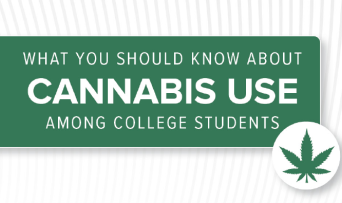

See below for a list of DEA publications to help support your efforts in preventing drug use and misuse among college students.

This fact card highlights the prevalence of marijuana use among college students, marijuana’s status under federal law, consequences of marijuana use, things you can do to prevent marijuana use, and resources. Read more.
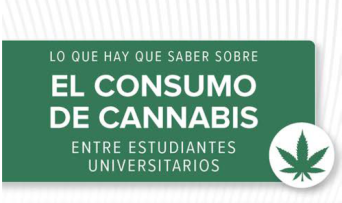
Casi uno de cada 16 estudiantes universitarios (6.3 %) consumió cannabis todos los días. Leer más.
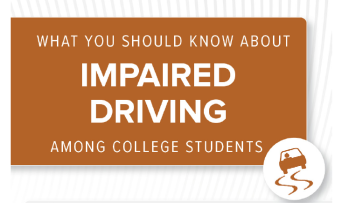
This fact card highlights the prevalence of impaired driving among college students, as well as its consequences, things you can do to prevent it, and resources. Read more.
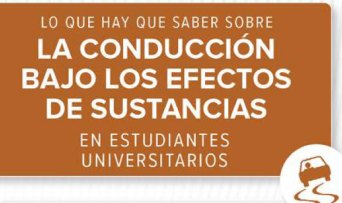
Entre los estudiantes de 19 a 22 años que cursaron estudios de tiempo completo en universidades de 4 años entre 2019 y 2023, el 16.7 % admitió haber manejado en las últimas dos semanas bajo los efectos del alcohol (incluso después de tomar cinco o más bebidas), marihuana u otras drogas ilícitas. Leer más.
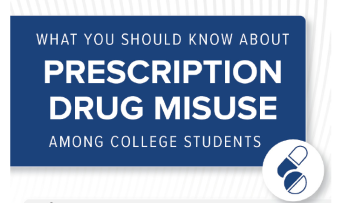
This fact card highlights the prevalence of prescription drug misuse among college students, consequences of prescription drug misuse, things you can do to prevent prescription drug misuse, and resources. Read more.
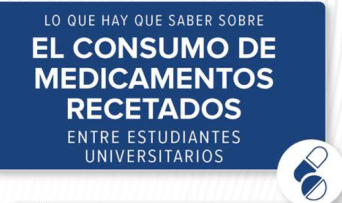
Aproximadamente el 3.2 % de los estudiantes universitarios afirmaron haber consumido uno o más tipos de medicamentos recetados (por ejemplo, estimulantes, sedantes, opiáceos) sin fines terapéuticos en los últimos tres meses. Leer más.

This guide (and its 11 supplements) provides a roadmap for college- and university-based prevention professionals to collaborate with a wide range of stakeholders, from students to administrators, to address campus-wide drug misuse issues. Read more.
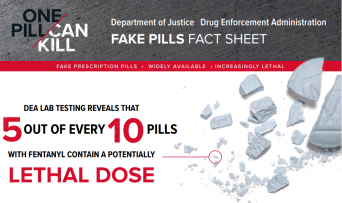
Want to learn about fake pills, including their origin, street names, appearance, effects, and more? Access the printable drug fact sheet here.
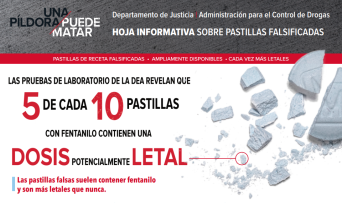
¿Quiere aprender sobre las píldoras falsas, incluyendo su origen, nombre de la calle, apriencia, efectos y más? Acceda la hoja imprimible aquí.
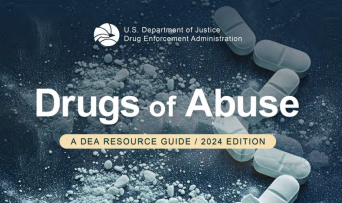
This publication delivers clear, scientific information about drugs in a factual, straightforward way. It covers topics including the Controlled Substances Act and introduces drug classes including narcotics, stimulants, marijuana/cannabis, inhalants, steroids, and more. Read more.
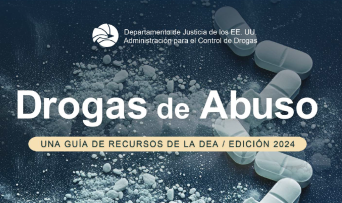
La educación juega un papel esencial en la prevención del abuso de sustancias. Drogas de abuso, Una guía de recursos de la DEA está diseñada para ser un recurso fiable sobre las drogas de las que se hace un abuso y un uso indebido en los Estados Unidos. Read more.
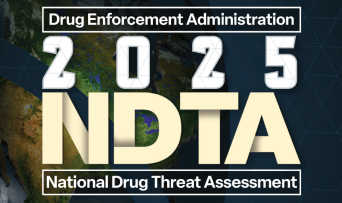
The National Drug Threat Assessment is DEA’s comprehensive review of the threats posed to the United States by deadly illicit drugs and the violent domestic and international drug trafficking organizations responsible for producing and trafficking the drugs poisoning our communities. Read more.
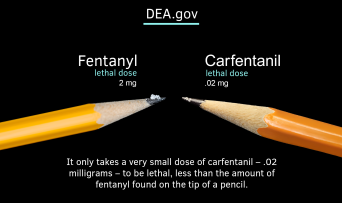
Carfentanil is a synthetic opioid originally developed for veterinary use, but which has become more prevalent in the illicit drug market and overdose deaths. It is extraordinarily potent and not approved for human use. In fact, it is estimated to be 10,000 times more potent than morphine and 100 times stronger than fentanyl. Read more.
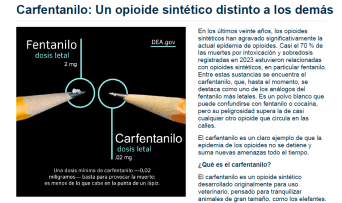
El carfentanilo es un opioide sintético desarrollado originalmente para uso veterinario, pensado para tranquilizar animales de gran tamaño, como los elefantes. Es una sustancia de una potencia extraordinaria y no está autorizada para uso en humanos. De hecho, se estima que es 10 000 veces más potente que la morfina y 100 veces más fuerte que el fentanilo. Leer más.
Want to spread the word about the consequences of marijuana use on campus? Print out this poster to post around campus.
Want to spread the word about the consequences of prescription drug misuse? Print out this poster to post around campus.
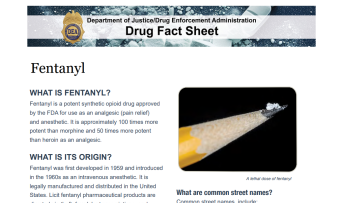
These printable drug fact sheets (all PDFs) serve as convenient, handy resources that are easy to distribute. Read more.
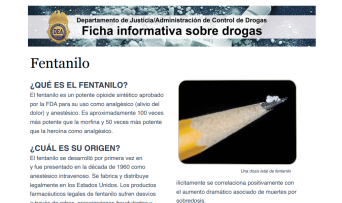
Conozca la historia y los efectos de cada una de las siguientes drogas con estas hojas informativas ordenadas e imprimibles (todas son PDF) que pueden servir como recursos útiles para repartir fácilmente. Leer más.
Unused or expired prescription medications are a public safety issue. The Drug Enforcement Administration provides guidance on the right way to dispose of unused medicine. Read more.
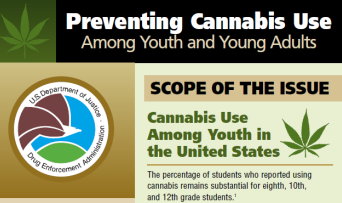
This publication provides an overview of the prevalence of cannabis use among youth and young adults; the physical, academic, and social consequences; tips for how to get involved to prevent cannabis use among youth and young adults; and federal resources to assist in such efforts. Read more.
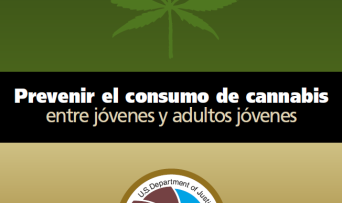
Esta publicación proporciona una visión general de la prevalencia del consumo de marihuana en esta población; las consecuencias físicas, académicas y sociales; consejos sobre cómo involucrarse para prevenir el consumo de marihuana entre jóvenes y jóvenes adultos; y recursos federales que sirven de ayuda en la tarea. Leer más.
This brochure produced by DEA’s Victim Witness Assistance Program provides information on the various drugs used in sexual assaults, warning signs of being drugged, what to do if you think you or a friend may have been drugged, and resources. Read more.